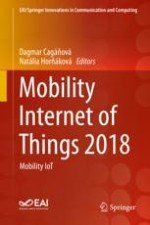2020 | OriginalPaper | Chapter
Intelligent Hardware-Software Platform for Efficient Coupling of Water-Energy Nexus in Smart Cities: A Conceptual Framework
Authors : Naran Pindoriya, Markus Duchon, Pragya Kirti Gupta, Venkatesh Pampana, S. N. Singh, Jakob Giza, Bastian Hackenberg, Arvind Kumar Rajput, Janki Jethi
Published in: Mobility Internet of Things 2018
Publisher: Springer International Publishing
Activate our intelligent search to find suitable subject content or patents.
Select sections of text to find matching patents with Artificial Intelligence. powered by
Select sections of text to find additional relevant content using AI-assisted search. powered by
